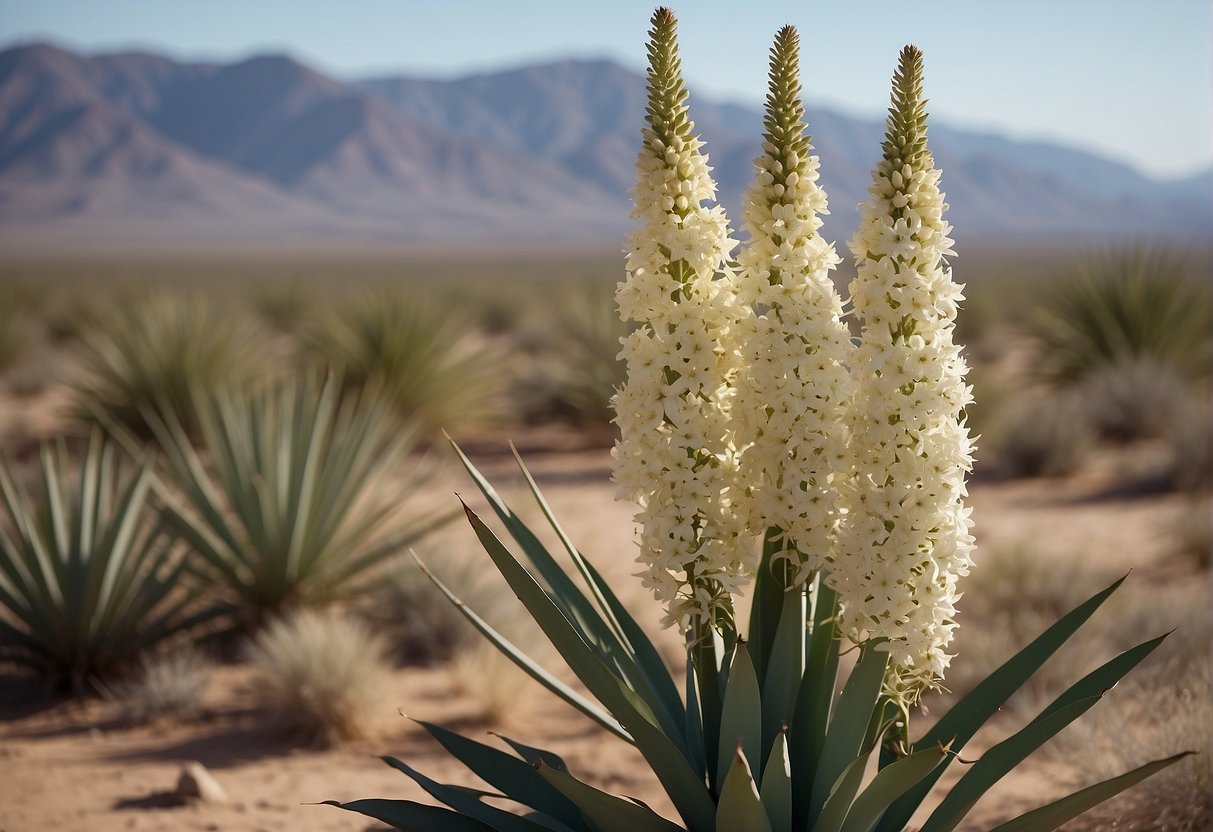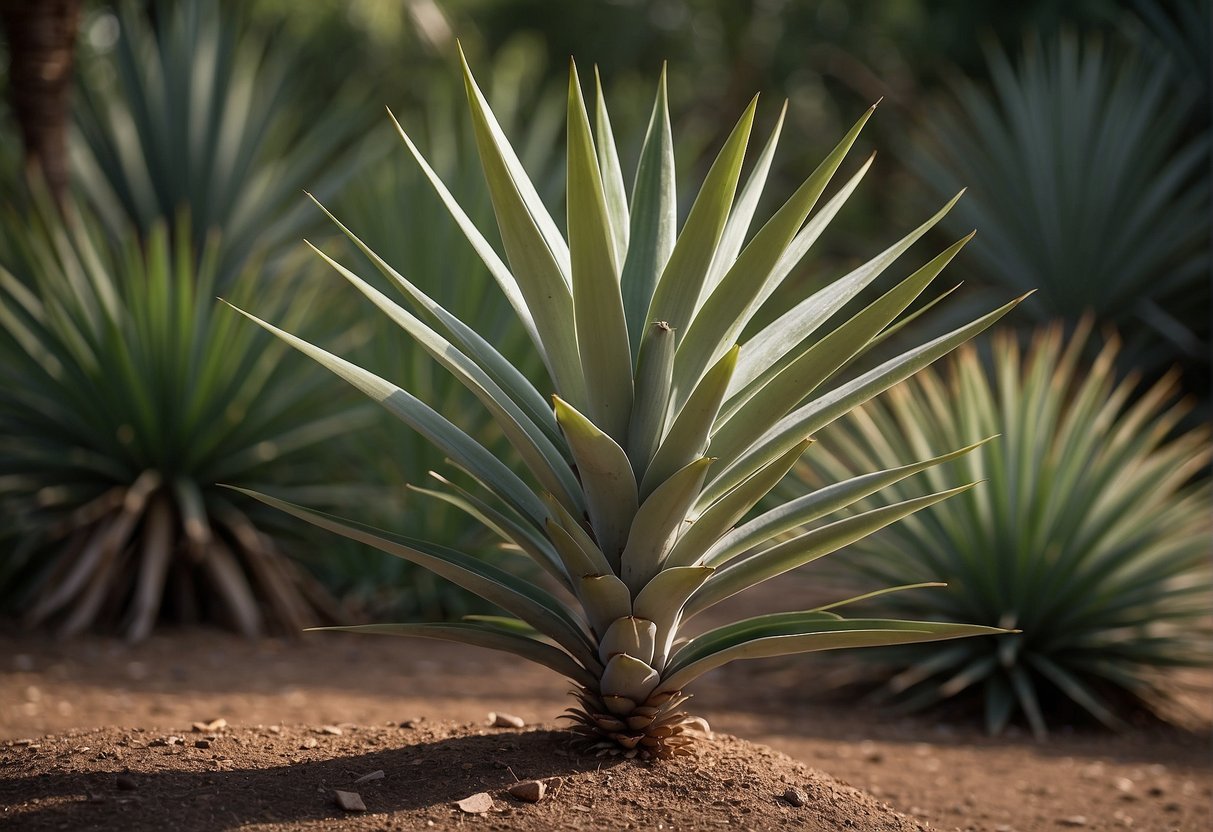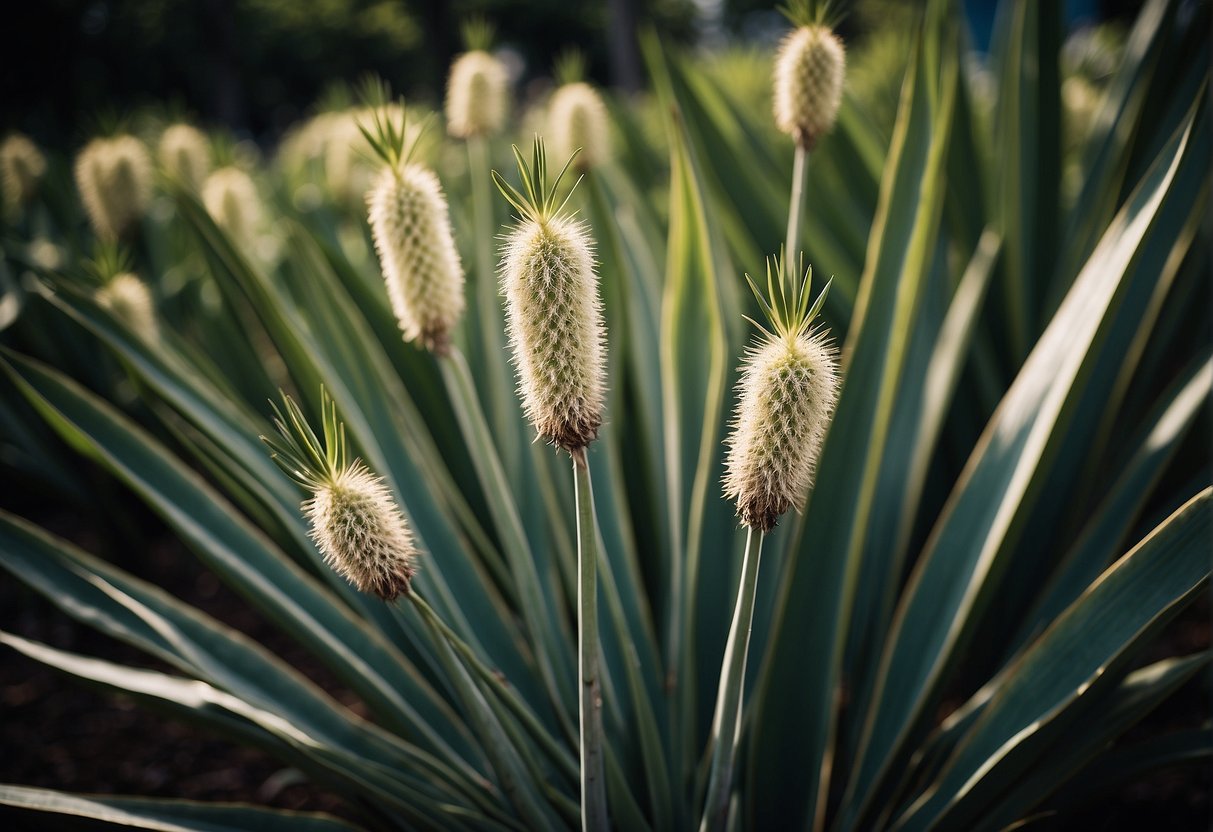Yucca plants are favored by many garden enthusiasts and landscape designers due to their distinctive look and easy-care nature. However, have you ever considered the potential size of these plants? The outcome might astonish you. Yucca plants vary in size, including compact versions suitable for table display to colossal specimens that can soar to 30 feet in height or even taller.

Understanding Yucca Plant Basics is key to knowing how large they can grow. Yucca plants are native to desert regions and are adapted to survive in hot, dry climates. They are known for their long, sword-like leaves and tall, spiky flower stalks. Yuccas are also known for their hardiness and ability to thrive in a variety of soil types, making them a popular choice for gardens and landscaping projects.
Caring for and Cultivating Yucca Plants is important if you want to achieve maximum growth potential. While yuccas are relatively low-maintenance plants, they do require some basic care to keep them healthy and thriving. This includes providing them with adequate sunlight, well-draining soil, and occasional watering. With the right care, your yucca plants can reach impressive heights and become a stunning focal point in your landscape.
Key Takeaways
- Yucca plants can range in size from small tabletop varieties to towering giants that reach heights of 30 feet or more.
- Yuccas are native to desert regions and are adapted to survive in hot, dry climates.
- Providing yucca plants with adequate sunlight, well-draining soil, and occasional watering is key to achieving maximum growth potential.
Understanding Yucca Plant Basics

Yucca plants are a diverse group of species that are native to North and Central America. They are evergreen, perennial shrubs that are known for their striking foliage and impressive size. In this section, we will explore the basics of yucca plants, including their species diversity and characteristics, as well as their optimal growing conditions.
Species Diversity and Characteristics
There are over 40 different species of yucca plants, each with its own unique characteristics. Some of the most popular species include Yucca elephantipes, Yucca filamentosa, Yucca gigantea, Yucca aloifolia, Yucca rostrata, Yucca brevifolia, and Yucca gloriosa. These species vary in size, shape, and color, but they all share certain characteristics that make them easily recognizable.
All yucca plants have long, sword-shaped leaves that grow in a rosette pattern. The leaves are typically stiff and pointed, and they can range in color from green to blue-green to gray. Yucca plants also produce tall, upright flower stalks that are covered in small, bell-shaped flowers. These flowers are usually white or cream-colored, and they are often fragrant.
Optimal Growing Conditions
Yucca plants are hardy and adaptable, but they do have certain growing requirements that must be met in order for them to thrive. These plants prefer well-draining soil that is rich in organic matter, and they require full sun to partial shade. Yucca plants can tolerate a wide range of temperatures, but they do best in warm, dry climates.
It is important to note that different species of yucca plants have different growing requirements. For example, Yucca gloriosa prefers sandy soil and full sun, while Yucca elephantipes can tolerate partial shade and a wider range of soil types. Before planting a yucca plant, it is important to research its specific growing requirements to ensure that you provide it with the optimal conditions for growth.
In conclusion, yucca plants are a diverse and fascinating group of species that can add beauty and interest to any garden or landscape. By understanding their basic characteristics and optimal growing conditions, you can successfully cultivate these stunning plants and enjoy their unique beauty for years to come.
Caring for and Cultivating Yucca Plants

Yucca plants are hardy and low-maintenance, making them a great addition to any garden or indoor space. However, to ensure that they grow to their fullest potential, it’s important to follow some basic care and cultivation guidelines.
Planting and Potting Requirements
When planting yucca plants, it’s important to choose a location with well-draining soil that is either neutral or slightly alkaline. If you’re planting in a pot, make sure it has good drainage and use a sandy, well-draining soil mix. Yucca plants prefer bright, indirect light and can tolerate both high and low temperatures.
Watering, Feeding, and Pruning Tips
Yucca plants don’t require frequent watering and can actually suffer from root rot if overwatered. Water your yucca plant only when the soil is completely dry. Yucca plants also don’t require much fertilizer, but you can feed them with a balanced fertilizer once or twice a year. Pruning is not necessary for yucca plants, but you can remove dead leaves or flowers to keep the plant looking tidy.
Common Pests and Problems
Yucca plants are generally pest-resistant, but they can sometimes be affected by mealybugs or scale insects. If you notice these pests, you can remove them with a cotton swab dipped in rubbing alcohol. Yucca plants can also suffer from root rot if they’re overwatered or planted in soil that doesn’t have good drainage. If you notice your yucca plant’s leaves turning yellow or brown, it may be a sign of root rot. To prevent this, make sure your plant is planted in well-draining soil and avoid overwatering.
Frequently Asked Questions
What is the maximum height for indoor yucca plants?
Indoor yucca plants can grow up to 10 feet tall, but they usually grow to be around 3-6 feet tall. The height of the plant depends on various factors such as lighting, temperature, and humidity.
What are the size differences between various yucca plant varieties?
Different yucca plant varieties can grow to different heights and widths. For example, the Yucca elephantipes can grow up to 30 feet tall, while the Yucca filamentosa only grows up to 5 feet tall. It’s important to research the specific variety of yucca plant you have to understand its unique growth patterns.
How long can a yucca plant be expected to live?
Yucca plants can live for several decades with proper care. Some species can live up to 50 years or more. However, the lifespan of a yucca plant depends on various factors such as its environment, care, and genetics.
What considerations should be taken when planting yucca near a building?
When planting yucca near a building, it’s important to consider the plant’s size and growth pattern. Yucca plants have strong roots that can damage building foundations if planted too close. It’s recommended to plant yucca at least 5 feet away from any structures.
What are the optimal conditions for placing a yucca plant outdoors?
Yucca plants thrive in full sun and well-draining soil. They can tolerate a wide range of temperatures, but they prefer warm and dry climates. It’s important to choose a location that provides adequate sunlight and protection from strong winds.
How does pot size affect the growth of a yucca plant?
The size of the pot can affect the growth of a yucca plant. If the pot is too small, the plant’s roots can become root-bound, which can stunt its growth. It’s recommended to choose a pot that is at least 2-3 inches larger in diameter than the plant’s root ball.














